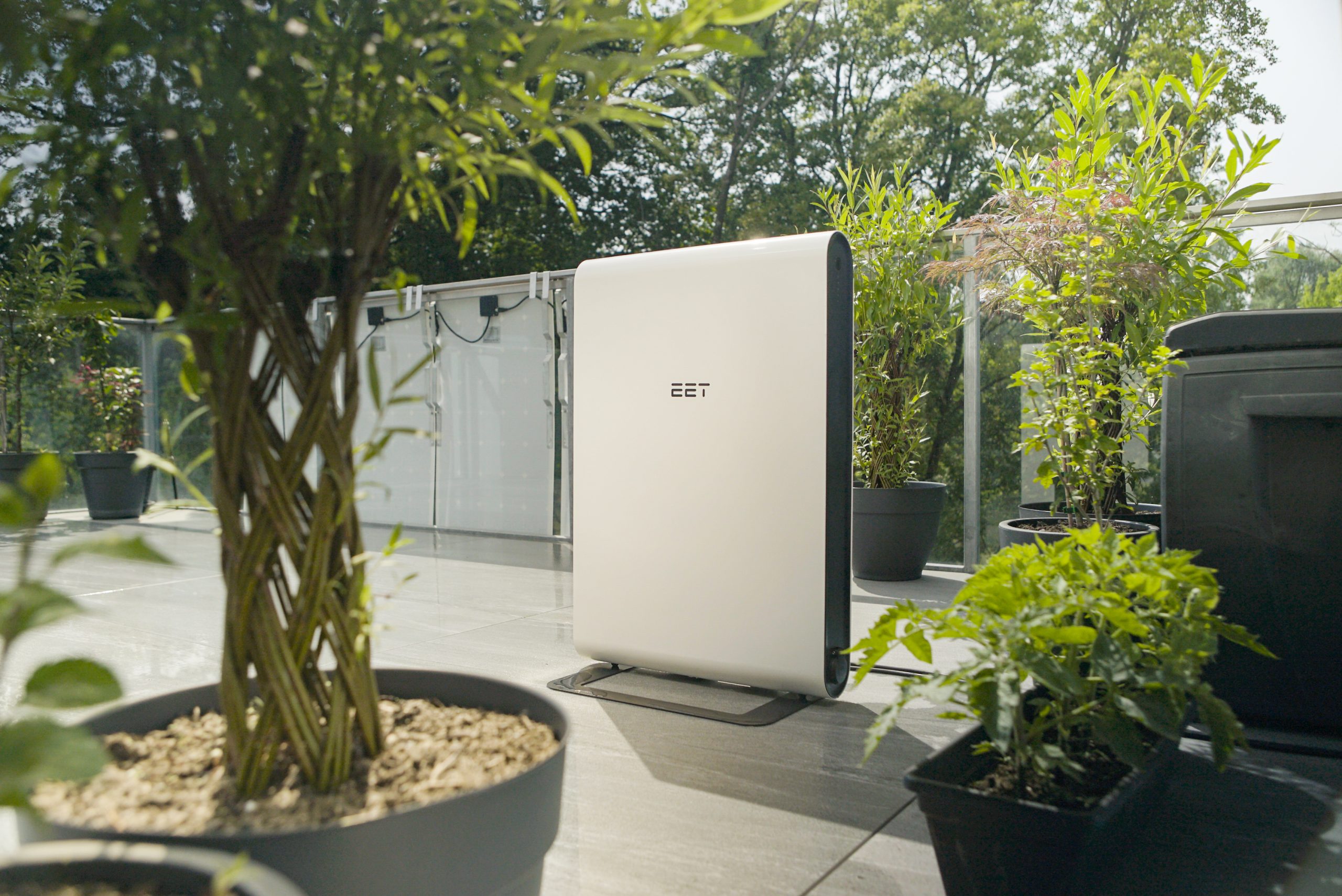
In ten to twenty years’ time, each household will be producing its own sustainable energy in one way or another. That’s the conviction of Christoph Grimmer, co-founder of Efficient Energy Technology GmbH (EET). This start-up has designed Solmate. Which is an affordable and easy-to-use mini system for generating solar power for private households. Next year, Solmate also wants to sell these systems in The Netherlands.
You can watch a video on how to install a SolMate here (in German).
Solmate can convert sunlight into electricity and store it when needed. You simply connect the system to the power grid in your home with a power plug. If electricity is needed in the house, Solmate is the system that will be tapped into at first for that. You can mount the solar panels on a balcony or a garden fence as a kind of private screen, or somewhere near the house as a stand-alone system.
EET is working together with all major national energy suppliers. They’ve come to realize that energy provision is heading in this direction. They’d rather be part of that instead of letting this trend pass them by,” Christoph explains.

What did you do before you launched your start-up and how did the idea come about?
We all studied at the Technical University of Graz (TU Graz). Stephan and Florian studied electrical engineering and I did technical chemistry. The subject that united us was about storing hydrogen from renewable energy. After completing our studies, we saw that the time was ripe for an initiative in the field of renewable energy. A market study that we carried out on our own inspired us to create Solmate, a system that generates and stores solar energy.
What’s your motivation? What problem do you resolve and why is this important?
We wanted to create jobs for ourselves in the field of renewable energy. We also wanted to promote the spread of renewable energy generation by making it accessible to everyone. This is also reflected in our prices: Our cheapest system costs €550. The product has a 25-year warranty on its performance and pays for itself after seven years. There are no extra costs. It allows users to cover about 10% of their electricity needs.

What has been the biggest obstacle that you have had to overcome?
Looking back, it’s a pretty good story. But when we were in the middle of getting started, it was tough. We worked all by ourselves during the first 11 months of our research and development. Our co-founder Stephan even became a father as well. But these are the tough stuff you have to get through. 2019 was strongly dominated by the climate debate. That proved to be a positive thing for us and gave Solmate a real boost.
What have been the best moments so far?
When we started shipping the first solar panels to customers this summer.
How are the work conditions at your location?
The ecosystem works very well in the Styria province and in Graz, the capital city. There are grants and excellent research institutes such as the Technical University of Graz. We enjoyed a great deal of cooperation with them during the development phase. Styria, along with 500 other European regions, is the region with the highest research quota in the EU rankings.
What can we expect from you in a year’s time?
We want to gain a foothold in the German and Swiss markets with Solmate in 2020 and establish our first contacts in Italy and the Netherlands. We plan to manufacture and sell a total of 2000 systems.
Where do you want Solmate to be in five years’ time?
By then we want to be a solid company with 100 employees, producing energy systems for renewable energy and spanning the whole of Europe. Since manufacturing costs depend on increasing scale, we want to rapidly expand and have the European market covered.
What makes your system different or better from other existing systems?
Technically, our ‘unique selling point’ is the sheer simplicity of our system. You just connect it to the wall socket and it delivers power whenever it’s needed. Unlike other start-ups, we don’t just focus on the technology itself, we also look at how the customer uses it. Technology isn’t just purchased because of the technology. There is also a demand for design and marketing.
Read other articles about start-ups via this link.
You can read more IO articles on sustainable energy here
